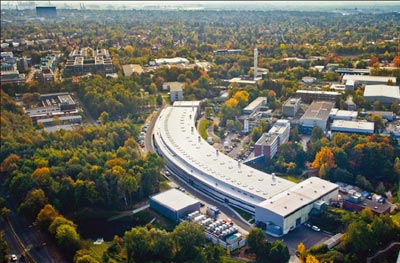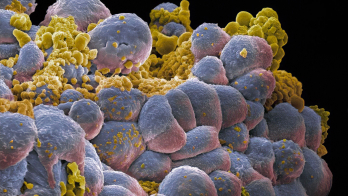
Image credit: DESY.
DESY’s new third-generation synchrotron radiation source, PETRA III, accelerated its first beam on 16 April. At 10.14 a.m. the positron bunches were injected and stored in the 2.3 km accelerator for the first time. The start of operation with the beam concludes a two-year upgrade that converted the storage ring PETRA into a world-class X-ray radiation source.
As the most powerful light source of its kind, PETRA III will offer excellent research possibilities to researchers who require tightly focused and very short-wavelength X-rays for their experiments. In particular, PETRA III will have the lowest emittance – 1 nm rad – of all high-energy (6 GeV) storage rings worldwide.
Following the stable storage of the particle beam achieved on 16 April, the accelerator is now being set up for the production of synchrotron radiation. The undulators – the magnets that ensure the machine’s high brilliance in X-rays – will be positioned to force the beam to oscillate and emit the desired intense, short-wavelength radiation. At the same time, the mounting of the 14 beamlines to be used for experiments continues in the newly constructed experiment hall. A first test run with synchrotron radiation is planned for this summer; regular user operation of the new synchrotron radiation source will start in 2010.
The PETRA storage ring began life as a leading electron–positron collider in the 1980s and later became a pre-accelerator for the electron/positron–proton collider, HERA. The remodelling into PETRA III at a cost of €225 million was funded mainly by the Federal Ministry of Education and Research, the City of Hamburg and the Helmholtz Association.








